Expert’s Rating
Pros
- Classic analogue aesthetic
- ECG, SpO2 & sleep tracking
- Excellent battery life
- Five-year warranty
Cons
- Heavy and bulky
- Fiddly fit
- No GPS
Our Verdict
The ScanWatch Horizon is an excellent evolution of Withings’ hybrid watch approach, squeezing its unrivalled health tech and brilliant battery life into a classic dive watch design.
Withings has made its name with so-called hybrid smartwatches: digital devices that include a full suite of health tracking features, but embodied in the design of an analogue time piece.
The latest generation, the ScanWatch, launched in 2020, but has since been followed up by the big brother reviewed here, the ScanWatch Horizon, which packs the same tech into a chunky dive watch design.
Let’s dive in.
Design and build
- Stainless steel casing
- 10ATM water-resistance
- Glow-in-the-dark hands
The design is really the key of the ScanWatch Horizon; almost everything that’s new to the watch comes down to how it looks and what it’s made of.
The time piece is openly inspired by classic diver’s watches like Rolex’s Submariner and Omega’s Seamaster ranges, with the heft and metal construction embodied by those designs.

Dominik Tomaszewski / Foundry
The casing is made from stainless steel, as is the including metal link strap, while the face is made out of scratch-resistant sapphire glass. In an unexpected but welcome touch, Withings also includes a separate water-resistant fluoroelastomer band, which you may prefer to use for some workouts.
That’s particularly welcome because I struggled to find a truly comfortable fit with the metal band. Withings provides the tools to add and remove links, a process that is a little fiddly but only takes a few minutes, but even after trying a few possible settings the best I could get was ‘pretty comfortable’, but never quite felt just right.
Getting a good fit matters for maximising results from the variety of sensors embedded into the back of the body, though it’s worth saying that even though I found my fit fiddly, this never seemed to impact the quality of the readings I received.
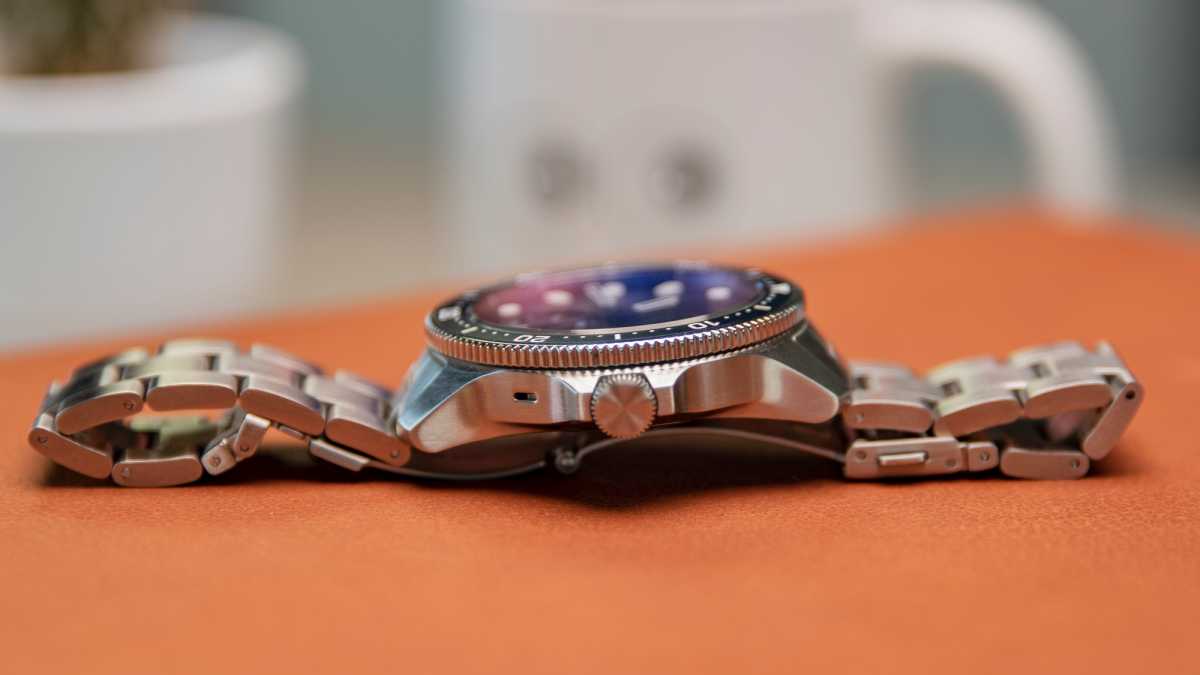
Dominik Tomaszewski / Foundry
The dive watch design means this is a big watch. It comes in just one size – 43mm – and the watch body alone weighs 72g, and much more with the link band attached. It’s hard to consider that a fault given the aesthetic it’s trying to echo though, and for many the heft will be welcome.
My personal taste skews closer to the leather-strapped original ScanWatch, but even I have to admit that the Horizon is a beautiful watch, with a simple strap and just enough complications to be useful without over-cluttering the design. It’s available in two versions, which only change the colour of the face: either navy blue or a deep green.
That face features a single small, circular PMOLED screen used to navigate the watch, and below it a simple dial to track your progress on your daily step count goal. There’s just one control – a digital crown button used to select options and scroll through menus. You can also rotate the bezel, a traditional feature used to track dive time at a glance, but it only serves that old-school purpose – it’s a shame Withings couldn’t find a way to link it to any smarter features.
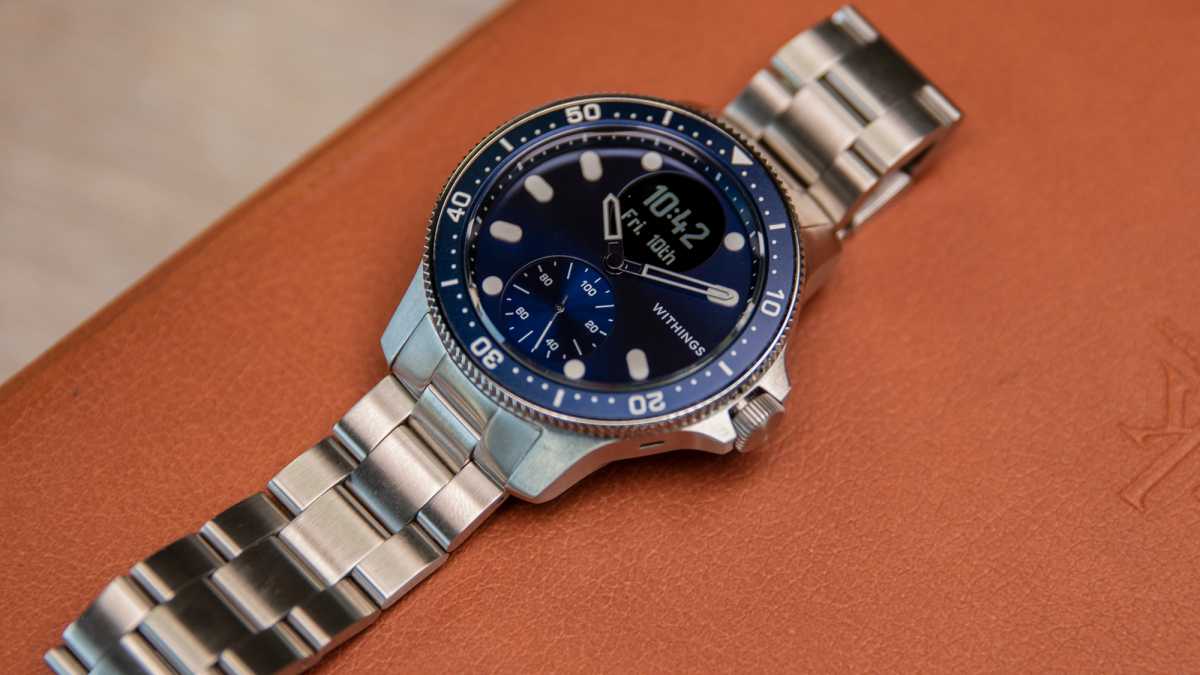
Dominik Tomaszewski / Foundry
The two watch hands (there’s no second hand here) are covered in a luminous coating, as are the minute markers, making the watch legible in the dark.
As you’d expect from a dive watch this is water-resistant. The original ScanWatch could handle up to 5ATM of water pressure, but the Horizon doubles that to 10ATM, meaning it could genuinely serve for (some) diving. I didn’t test it to that level, I’ll admit, but it’s survived plenty of showers in my time reviewing the watch.
Tracking and performance
- Fitness and exercise tracking
- Sleep, SpO2, and ECG
- Basic notification support
- App works on iOS or Android
The ScanWatch may seem simple because of the minimalist controls and watch face, but Withings’ tracking is actually some of the most comprehensive around.
The usual suspects are all here, for starters. Heart rate, steps, distance, and floors climbed are all tracked, as are a range of exercises from badminton to zumba. You can only set up to five exercises to be accessible from the watch at any given time though – a frustrating restriction, but one designed to make navigating the list simple.
There’s also some automatic workout detection, but this is limited to walking, running, and swimming.

Dominik Tomaszewski / Foundry
The big downside to the fitness tracking here is that there’s no built-in GPS tracking, which will limit how useful this is for serious runners or cyclists. There’s clearly space in the watch case for it, but Withings presumably didn’t see that sort of fitness tracking as a priority. It only supports connected GPS, so you have to carry your phone with you during workouts if you want to accurately track your route.
It’s the health tracking where the ScanWatch comes into its own. You can access on-demand electrocardiogram (ECG) and blood oxygen saturation (SpO2) checks, along with passive monitoring of atrial fibrillation (AFib) and breathing disturbances while sleeping (often a sign of sleep apnea). That’s along with more general sleep quality tracking too.
The device has been certified by both the American FDA and by European health bodies, and its health-tracking has been clinically validated, so you should be able to trust its results. Withings is however careful to point out its limitations, warning that the AFib detection isn’t designed to detect heart attacks.
All of the data, from fitness to health features, is captured and recorded in the Withings Health Mate app, which is free and available on iOS or Android.
Health Mate is one of the best tracking apps on the market for my money, and is also excellent at combining data from Withings’ other devices (including smart scales and dedicated sleep trackers) if you want to go all-in on the ecosystem.
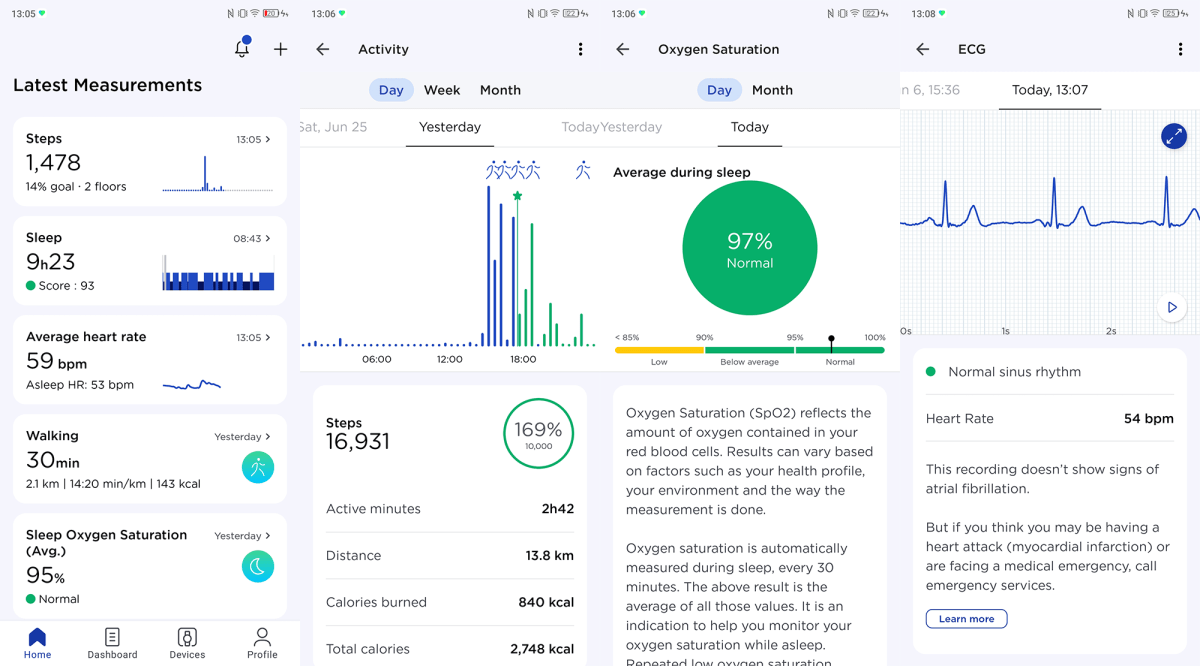
Dominic Preston / Foundry
Data is laid out cleanly and clearly on the dashboard, with clear progress tracking, support for multiple users, and quick access to all of the customisable settings for the watch itself.
Those include some, albeit limited, notification support. You can receive notifications from any app you wish on your watch (or none at all), but with the small screen they’ll only really be useful for simple updates from select apps – it’s not really going to help you read your emails, though can scroll through a text message.
Battery life
- Up to 30 days battery
- Less if you activate every tracking feature
- Two hours to charge
Battery life is another massive strength for the ScanWatch – the upside of only featuring a miniature monochrome display.
Withings says that the Horizon can last up to 30 days on a single charge, and a further 20 days (for 50 total) in power reserve mode, which limits you to activity tracking and checking the time.
In practice, battery life is more variable, and it depends which features you use and how often. Every use of the ECG or SpO2 sensors will chip away at your battery life, though it’s the various optional passive modes that use up more: monitoring signs of AFib, and checking oxygen saturation and breathing disturbances while you sleep – the latter in particular warns that it will “drastically” impact battery, and the recommended automatic setting only turns it on “a few times each quarter.”
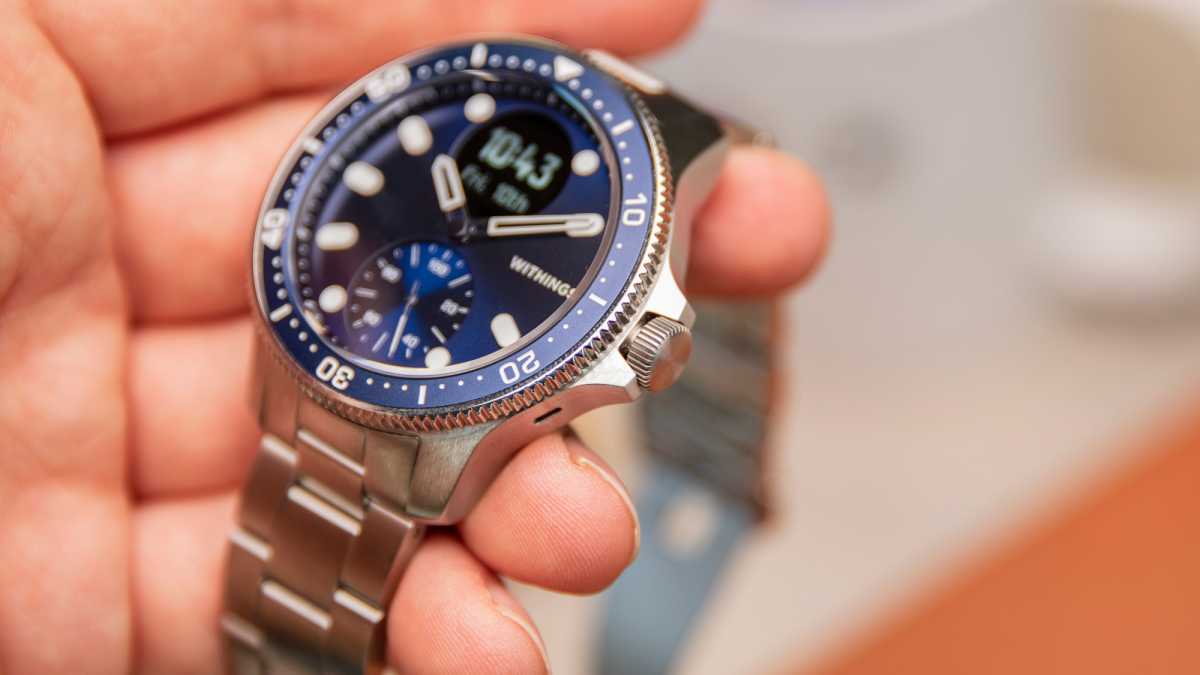
Dominik Tomaszewski / Foundry
I tested the watch with every passive setting enabled, with breathing disturbances on the above auto mode (as opposed to every night or off entirely), and a full charge lasted me about nine days. That included monitoring several workouts and walks, along with an occasional manual ECG or SpO2 check.
That’s a long way short of Withings’ 30 days, but is still undeniably impressive, and far beyond what any full-screened smartwatch can deliver. And given that a full charge still takes only a couple of hours, it’s no real hassle to top the watch back up when it eventually does run out.
Price and availability
The downside to the ScanWatch Horizon is the price. It’s $499/£499/€499, which is roughly double the price of the original ScanWatch, despite packing the same tracking features. You can buy it directly from Withings.
What you’re paying for here compared to the regular ScanWatch is a combination of design and durability, and those elements also help it stand out when compared to other fitness trackers and more fully feature smartwatches. There are also few rivals that can compete with Withings on the quality of its health-tracking features.
You might bristle at how few smart features are here compared to the likes of the Apple Watch and Samsung Galaxy Watch, but Withings wins on tracking and battery life – even exceeding the top-of-the-line Fitbit Sense. It also has the edge on longevity – its timeless design won’t age, and neither will its feature set (or battery). Withings clearly sees it that way too, offering an impressive five-year warranty with the watch.
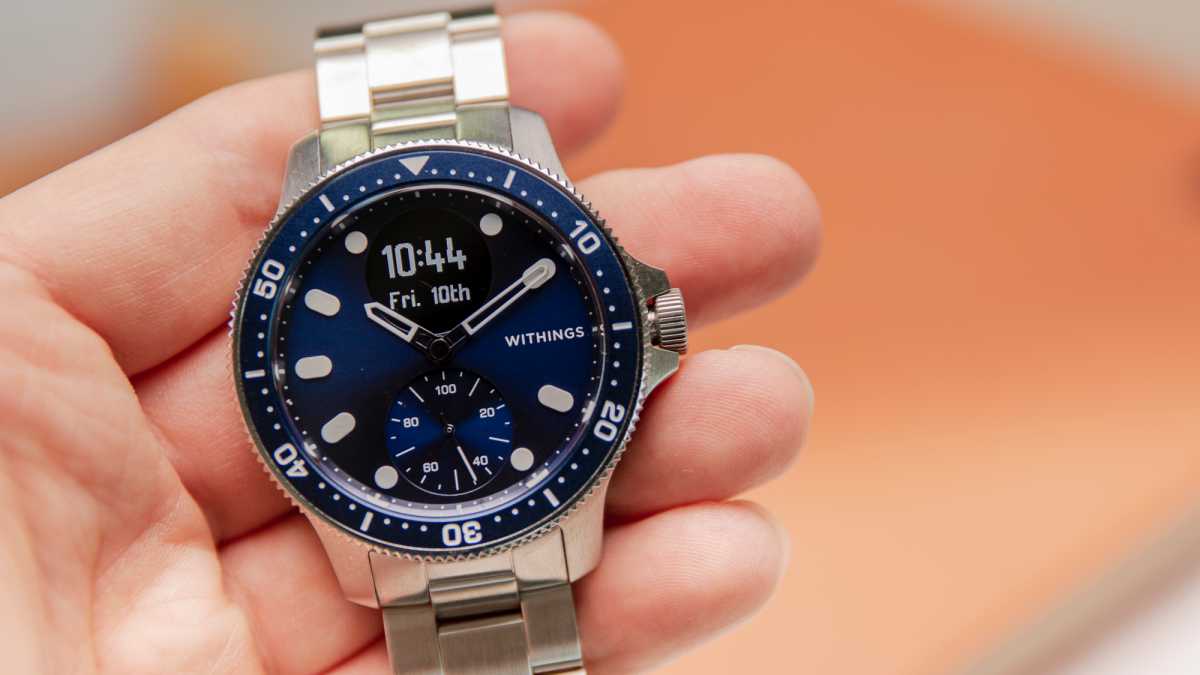
Dominik Tomaszewski / Foundry
Still, if you’re not convinced, check out our ranking of the best fitness trackers to see how the Horizon compares, or the best smartwatches for products that have more comprehensive smart features.
Verdict
The ScanWatch Horizon is another impressive hybrid watch from Withings that pairs an analogue aesthetic with a comprehensive and modern set of health tracking features.
It’s expensive – especially compared to the first ScanWatch – but that’s down to a combination of a premium, durable design and health features that no rivals can match.
The dive watch look won’t be for everyone (and if you’re not a fan, the cheaper ScanWatch might appeal more) but if you want a health and fitness tracker that could be mistaken for a Rolex, there’s none better.
Specs
Withings ScanWatch Horizon specs:
- Electrocardiogram (ECG) sensor
- Photoplethysmography (PPG) sensor
- SpO2 sensor
- AFib detection
- Breathing disturbance detection
- Bluetooth Low Energy
- Silent alarm
- Heartrate, steps, distance, calorie, and elevation tracking
- 30+ workouts
- Sleep monitoring
- Water resistant up to 100m (10 ATM)
- Up to 30-day battery life
- Requires iOS 14 or Android 8 or later
- 72g (43mm)




